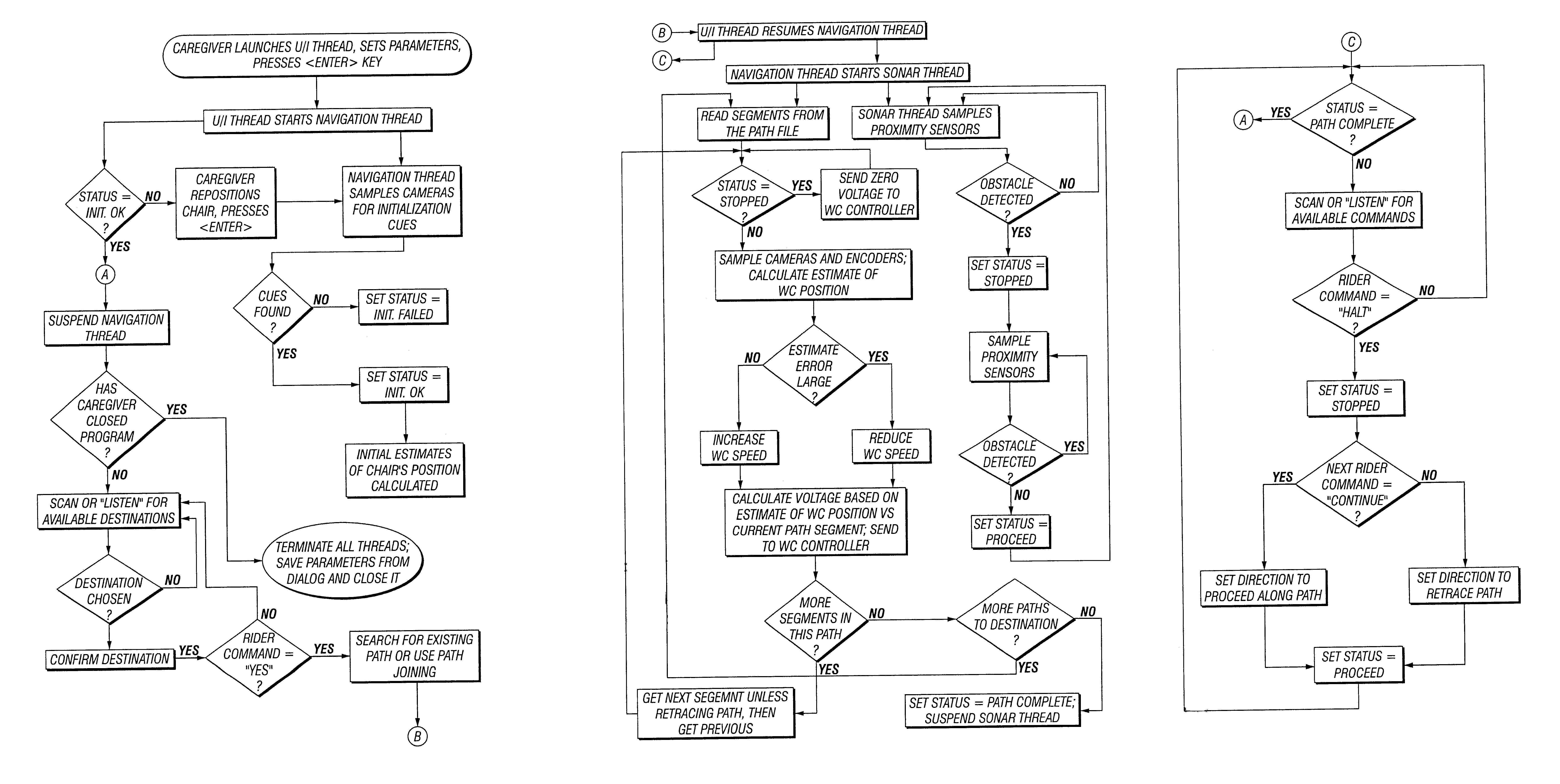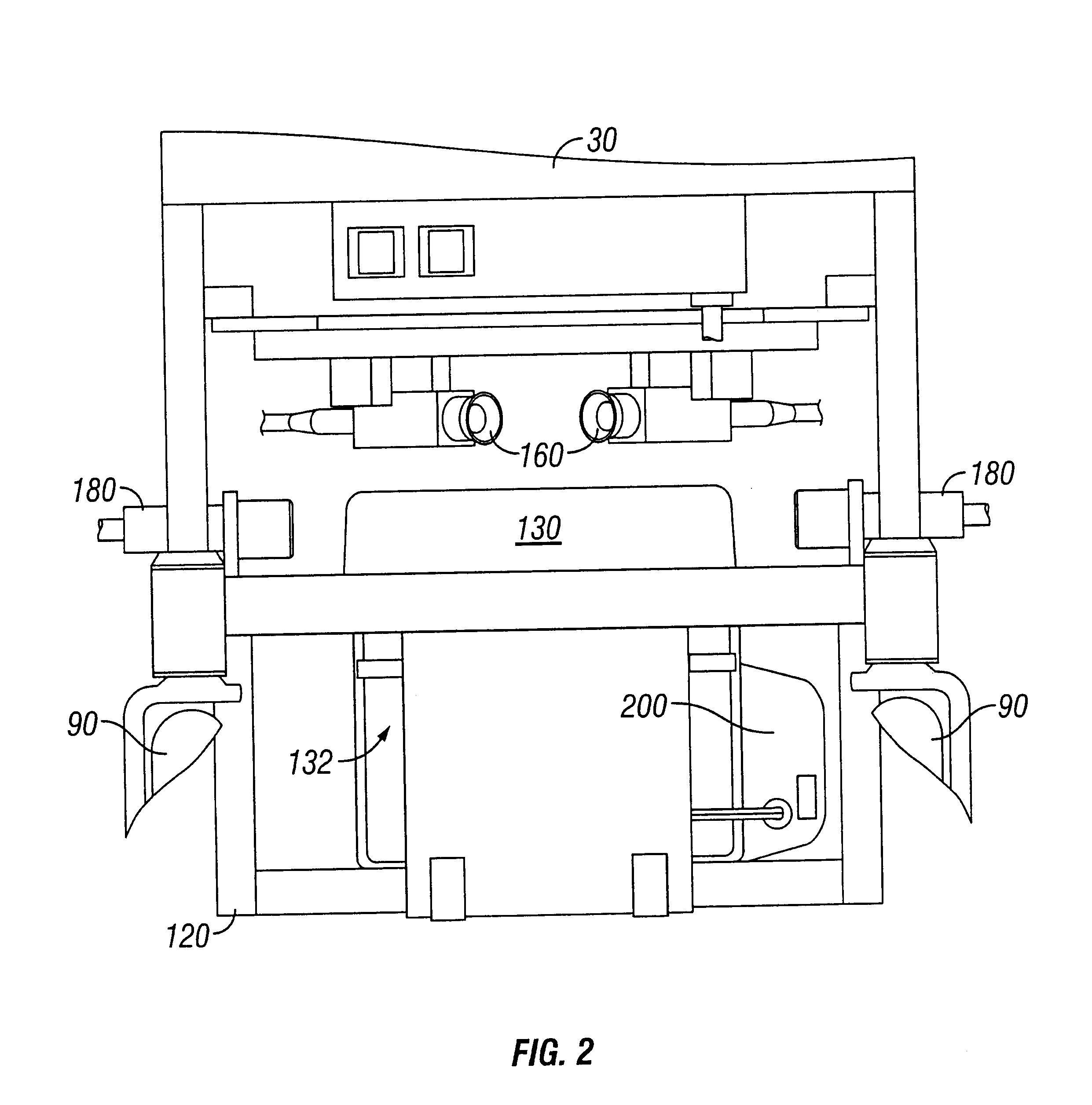Computer-controlled power wheelchair navigation system
a navigation system and computer control technology, applied in the field of wheelchair navigation system, can solve the problems of difficulty in handling multiple and intersecting paths, and none of the known assistance devices are fully autonomous operations, and achieve the effect of enabling independent mobility for handicapped peopl
- Summary
- Abstract
- Description
- Claims
- Application Information
AI Technical Summary
Benefits of technology
Problems solved by technology
Method used
Image
Examples
second embodiment
the navigation system uses a single computer 150. The computer 150 must accommodate interfacing with a variety of hardware components. The second embodiment also has digital encoders 180 and upgraded video cameras or sensors 160. The second embodiment uses PCMCIA cards for capturing digital encoder signals, and for providing the output voltage to the wheelchair controller 190. Since no suitable ‘frame grabber’ board having either a PCMCIA or USB interface can be found, the present system incorporates a full-sized PCI frame grabber, and interfaces it with the computer 150 via a docking station 210. Video cameras 160 are serially interfaced to the computer 150.
Navigation and obstacle detection software modules use various types of programming language such as C and C++, but are not limited thereto. The software module is also designed to run as ‘threads’ or processes controlled by the user interface software. At the same time, the navigation software is extensively modified to reflect...
PUM
 Login to View More
Login to View More Abstract
Description
Claims
Application Information
 Login to View More
Login to View More - R&D
- Intellectual Property
- Life Sciences
- Materials
- Tech Scout
- Unparalleled Data Quality
- Higher Quality Content
- 60% Fewer Hallucinations
Browse by: Latest US Patents, China's latest patents, Technical Efficacy Thesaurus, Application Domain, Technology Topic, Popular Technical Reports.
© 2025 PatSnap. All rights reserved.Legal|Privacy policy|Modern Slavery Act Transparency Statement|Sitemap|About US| Contact US: help@patsnap.com



